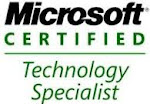SharePoint 2013 is supported for mobile devices and it will detect
the request from mobile devices according to the request it will changes the
URL of the page automatically. Mobile view is different from the desktop view
in SharePoint. SharePoint is having complete different controls for mobile
pages.
We are having Microsoft.SharePoint.MobileControl namespaces
for mobile pages which inherits from System.Web.UI.MobileControls namespace.
Whenever mobile device request is detected, it will redirected to mobile
devices optimized version pages. By default these pages will be located in “_layouts/mobile”
folder. By default the team site redirects mobile home page “_layouts/mobile/mblwp.aspx”.
We can customize the home page for the mobile devices.
We can restrict redirection for mobile pages, by adding the
below lines in web.config file System.web for SharePoint web application
<browserCaps>
<result type="System.Web.Mobile.MobileCapabilities,
System.Web.Mobile, Version=2.0.0.0, Culture=neutral, PublicKeyToken=d04e4d2a43f43d3e"/>
<filter>isMobileDevice=false</filter>
</browserCaps>
































